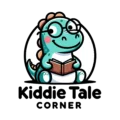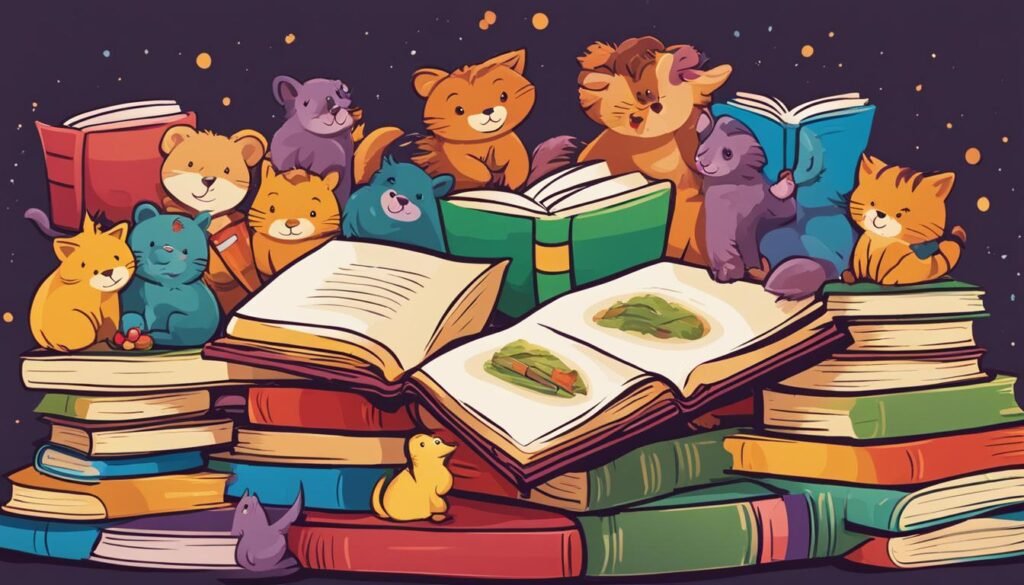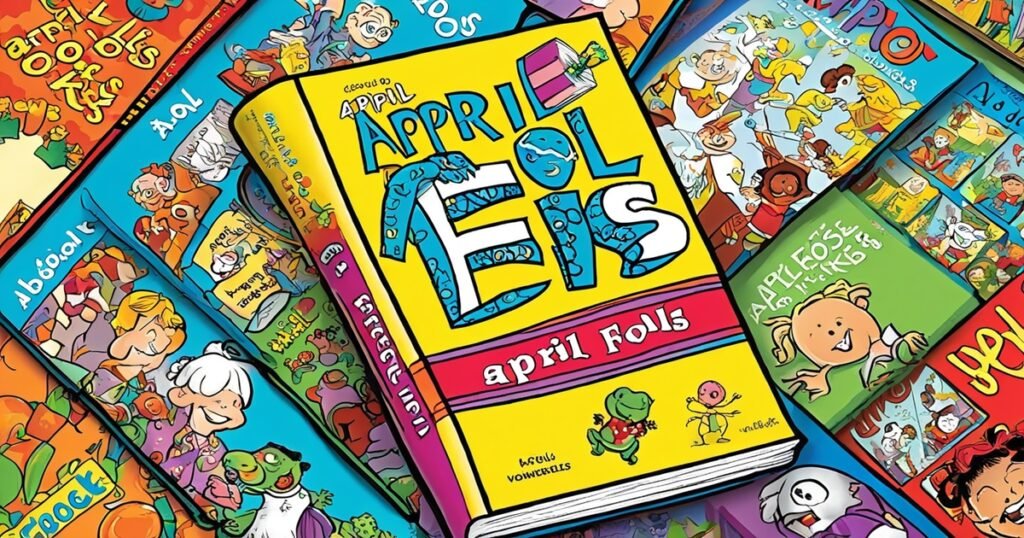Embracing the charm of storytelling, the world of children’s literature offers an expansive repository for learning English. Among the multitude of choices, some English books stand out for their ability to skillfully combine learning and kids’ enjoyment, fostering a love for reading from an early age. These best English books for kids provide an interactive learning experience that is not only educational but also engaging and fun, capturing the essence of what great children’s literature is all about.
The captivating narratives of these English books for kids provide opportunities for children to interactively engage with language, cultivating essential literacy skills. Through these immersive stories, kids will learn to appreciate words, develop critical thinking skills, expand their vocabulary, and enhance comprehension, setting them up for success in their educational journey.
Table of Contents
- Key Takeaways:
- Classic Tales and Bedtime Stories
- Adventurous Journeys in Kids’ Literature
- English Books for Kids Enhancing Language Skills
- Fostering Creativity with English Picture Books for Kids
- Nurturing Empathy through Children’s Books in English
- Introducing English Alphabet Books for Kids
- Educational Books for Kids with a Twist of Fun
- Funny and Engaging English Language Learning Books for Kids
- Best English Books for Kids Selection Criteria
- Integrating Books with Other Learning Resources
- Conclusion
- Source Links
Key Takeaways:
- English books for kids offer an exciting platform for learning and entertainment.
- The selected stories foster a passion for reading at a young age.
- Children develop essential literacy skills while enjoying engaging narratives.
- These interactive books aid in vocabulary development and comprehension enhancement.
- Regular immersion in these stories prepares children for academic success.
Classic Tales and Bedtime Stories
When considering classic children’s books in English, some tales stand out for their profound depth, delivering beautiful stories while providing a stepping stone for proficiency in English. Among these timeless narratives reside the educational books for kids, such as “The Giving Tree” by Shel Silverstein and “Goodnight Moon” by Margaret Wise Brown. Both have remained popular English books for children, and rightly so, due to their remarkable balance of entertainment and education.
Timeless Lessons from “The Giving Tree”
The power of “The Giving Tree” lies in its rich depiction of love, sacrifice, and friendship. The affinity between a boy and an apple tree serves as a picturesque bridge for children to connect with deeper emotions. It is a narrative that proves equally engaging for children and adults alike through a simple script, making it ideal for intermediate English learners.
“Goodnight Moon”: A Soothing Literary Ritual
Every night, as the moon takes its place in the star-studded sky, many young faces brighten up at the sight of “Goodnight Moon”. This bed-time favorite is an oasis of calming rhythms and cozy imagery – pineapples, strawberries, and a cuddly rabbit summoning the beauty of twilight dreams. Its repetitive structure gently introduces children to new vocabulary, fostering their first steps in the English language. Therefore, “Goodnight Moon” finds its rightful place on the list of best English books for kids.
The presence of such classic books reinforces the indispensable role of literature in children’s developmental stages, instilling essential morals and lessons while fortifying their language skills. In the following sections, we venture further into the realm of children’s English books, unearthing the treasures that blend learning with the incredible power of storytelling.
Adventurous Journeys in Kids’ Literature
Kids’ imagination knows no boundaries, a truth that is explicitly evident in English storybooks for kids. Among the gibbous pool of delightful narratives, adventure stories stand out, transporting young minds into fascinating realms of exploration and wonder.
Boosting this sense of curiosity and discovery, some particular tales prove to be kid-favorites universally. One such prominent example is the beloved book ‘Curious George’ by H.A. Rey and Margret Rey. The story features the titular character’s mischievous escapades in the city, teeming with excitement at every turn.
“Remember, Curious George… curiosity can sometimes lead to great adventure!”
George’s exciting encounters provide not just entertainment but also an educational experience, presenting youngsters and English learners with an array of simple sentence structures. The fun-filled narrative, paired with relatable scenarios, makes George’s adventures compelling learning opportunities.

Another entrancing tale that embarks its young readers on a fantastical journey is ‘Where the Wild Things Are’ by Maurice Sendak. Unlike ‘Curious George’, the narrative involves Max, a young boy whose adventure dips into the more intricate and imaginative aspects of kids’ literature.
“And Max, the king of all wild things, was lonely and wanted to be where someone loved him best of all.”
Max’s journey showcases a classic exploration of mischief and mastery, drawing in the reader through vivid depictions of wild creatures and strange land—a world sprung right out of a kid’s vivid imagination. With language slightly more intricate than ‘Curious George’, the book is a befitting pick for slightly advanced readers seeking a gripping read.
To conclude, narratives packed with adventure draw kids into the universe of literature, fueling their imagination and promoting a love for books. The fusion of fun and learning in these English storybooks for kids makes them an indispensable part of a child’s growing years.
English Books for Kids Enhancing Language Skills
Learning English can be both engaging and educational with the right selection of books. Highlighting this, we delve into two iconic works from Dr. Seuss’s collection that have served, not only as sources of amusement, but also as valuable tools for enriching language skills. These particular English language learning books for kids have been designed in a way to utilize playful language and rhythmic storytelling, thereby creating an interactive and enjoyable learning experience.
Phonics and Vocabulary with “Green Eggs and Ham”
Championing the cause of phonics for children and vocabulary development is Dr. Seuss’s “Green Eggs and Ham”. With its rhythmic exploration of food preferences and persistence, this inventive narrative brings to the table an element of fun in learning English. It is the perfect blend of repetition and multiple verb tenses wrapped in amusing rhymes that enhances phonics learning and vocabulary. Truly, children would find themselves enjoying the thrill of word sounds while simultaneously expanding their English word bank.
Grammar and Syntax through “The Cat in the Hat”
Contributing to grammar skills in an exciting way is another masterpiece from the renowned Dr. Seuss – “The Cat in the Hat”. The book introduces kids to a variety of words through playful language, which encourages readers to grasp fundamental grammar and syntax. In essence, the book combines entertaining storytelling with rich language learning experiences, therefore serving as a bridge towards a sound understanding of English grammar and syntax for children.
In conclusion, books such as “Green Eggs and Ham” and “The Cat in the Hat” pave way for children to enrich their English language capabilities while relishing the reading experience. After all, when you mix pleasure with learning, the result is a ripe environment for growth and love towards the subject.
Fostering Creativity with English Picture Books for Kids
Promoting innovation and original thinking in young minds is no small task, yet english picture books for kids have proven to be a game changer. These books combine vivid illustrations and engaging storytelling, inspiring creativity in children by presenting a world where text and visuals intermingle.
A clear example is “The Very Hungry Caterpillar” by Eric Carle. This beloved story not only entertains with its colorful narrative but also educates about the concepts of growth, nutrition, and the days of the week.
Another great choice is “Brown Bear, Brown Bear, What Do You See?” by Bill Martin Jr. and Eric Carle. It’s a delightful tour of colors and animals, and encourages children to observe their surroundings closely. The vivid images and repetitive text make it an engaging read for young learners.
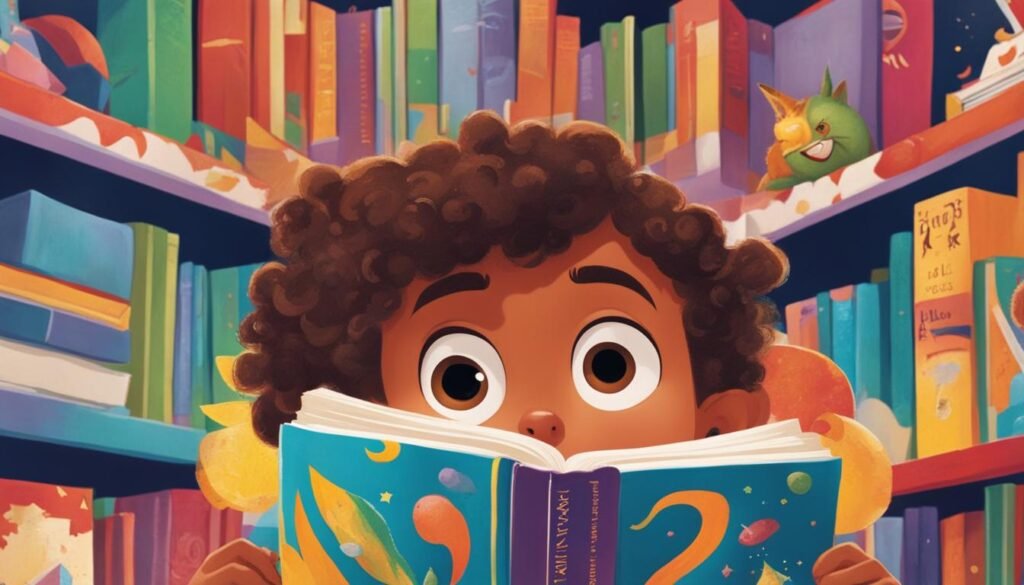
“Imagination is more important than knowledge. For knowledge is limited, whereas imagination embraces the entire world, stimulating progress, giving birth to evolution.” – Albert Einstein
Both the aforementioned titles exemplify visual storytelling at its finest, encouraging children not just to read the text, but also to interpret the pictures and associate new vocabulary and concepts. Fostering the integration of image and text deepens comprehension and enhances the reading experience, making these books invaluable aids for English language learners.
Now, let us consider three prime examples of English picture books that have successfully ignited young imaginations:
| Book Title | Author | Key Themes |
|---|---|---|
| “The Very Hungry Caterpillar” | Eric Carle | Growth, Nutrition, Days of the Week |
| “Brown Bear, Brown Bear, What Do You See?” | Bill Martin Jr. & Eric Carle | Colors, Animals, Observation |
| “Where the Wild Things Are” | Maurice Sendak | Imagination, Adventure, Emotion |
In conclusion, English picture books hold the key to fostering creativity, enriching language skills, and unveiling a child’s imagination. They serve as windows into a world of visual explorations, introducing a holistic learning approach that marries text with immersive illustrations.
Nurturing Empathy through Children’s Books in English
Books are powerful tools to foster empathy, effectively contributing to children’s emotional development. They take the young reader on a journey through varied human experiences, helping them understand and value others’ feelings. This section highlights notable English storybooks for kids, namely “Corduroy” by Don Freeman and “The Story of Ferdinand” by Munro Leaf. These books address significant life lessons in a gentle and sensitive manner, cultivating a deeper understanding and empathy in children’s literature.
The Heartfelt Connections in “Corduroy”
“Corduroy” is a touching story of a toy bear in a department store, who is looking for a home and someone to love him. This wonderful tale helps children understand the profound emotions related to longing, acceptance, and the joy of finding a place where they truly belong. Through the simple yet delightful storyline, kids learn to empathize with Corduroy’s feelings, thereby nurturing their emotional intelligence.
Building Compassion with “The Story of Ferdinand”
In contrast, “The Story of Ferdinand” takes children on a different path of understanding feelings. Ferdinand, the bull, who prefers smelling flowers and enjoying tranquility over fighting in bullfights, introduces kids to the virtue of being true to oneself, the concept of pacifism, and the importance of respecting differing perspectives. This book serves as an excellent instrument in building compassion through its meaningful narrative.
The following table summarizes the narrative themes and contributions of both books towards enhancing empathy in children’s literature.
| Book Title | Author | Key Themes | Value in Emotional Development |
|---|---|---|---|
| Corduroy | Don Freeman | Longing, acceptance, belonging | Understanding and expressing emotions, empathy, self-worth |
| The Story of Ferdinand | Munro Leaf | Staying true to oneself, peace over violence | Compassion, respecting differences, peacefulness |
Children’s books, imbued with sensitive narratives, offer a beautiful way to cultivate empathy in young minds, opening doors for authentic emotional development.
Introducing English Alphabet Books for Kids
Steering young minds towards the vast world of English language, english alphabet books for kids form a pivotal stepping stone. Manifesting the seeds of foundational reading skills and fostering letter recognition, these books exhibit a harmonious blend of learning and amusement.
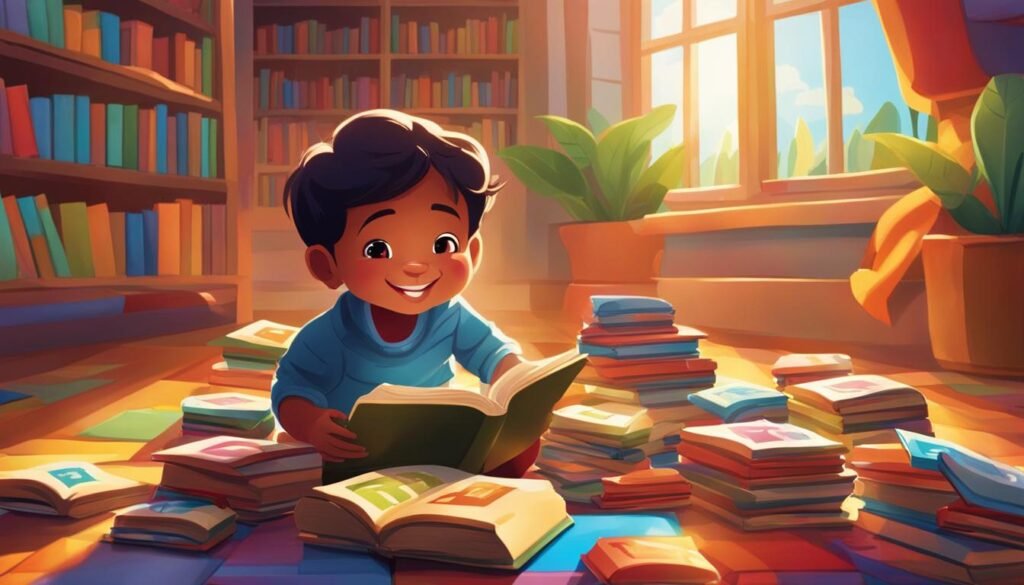
One outstanding example in this realm is the book “Learning English with Laughter”. Infusing the process of learning alphabets with elements of humor and interactivity, this book offers a seamlessly enjoyable initiation to English language learning. It prevents the learning process from transforming into a monotonous drill, captivating the young learners’ attention while they familiarize themselves with the building blocks of the English language.
- Helps prompt recognition and recollection of letters
- Stimulates cognitive abilities
- Strengthens visual memory
- Invokes curiosity and interest towards language learning
As these books lay a solid groundwork, children with minimal English background find themselves well-prepared to embark on their journey towards expanding literacy and unlocking potential learning horizons.
Educational Books for Kids with a Twist of Fun
Books that merge the joy of reading with learning objectives provide a novel way to stimulate young minds. They deliver more than just words on a page, diving into real-life subjects and issues such as healthy eating for kids and showcasing moral lessons. What better way to introduce these concepts than through intriguing storylines and amusing characters that remain etched in readers’ minds? Let’s explore a couple of such books that masterfully fuse educating through fun.
Learning Healthy Habits with “The Very Hungry Caterpillar”
Eric Carle’s “The Very Hungry Caterpillar” has been a perennial favorite amongst young readers worldwide. It is renowned not only for its captivating, vibrant illustrations but also for its underlying message. It introduces children to the lifecycle of a caterpillar into a butterfly, subtly paralleling it to the importance of a balanced diet and transformation through healthy eating habits.
Discovering the Joy of Giving with “If You Give a Moose a Muffin”
Next on our list is Laura Numeroff’s entertaining and slightly chaotic tale, “If You Give a Moose a Muffin”. Partially fantastical yet profoundly real, this story beautifully articulates the concept of giving and its cascading effects. What starts as a simple act of kindness spirals into an endless cycle of whimsical requests, instilling in young readers the value of generosity.
Let’s encapsulate the key aspects of these English storybooks for kids in the following table:
| Title | Author | Key Learning Objective | Primary Moral Lesson |
|---|---|---|---|
| The Very Hungry Caterpillar | Eric Carle | Healthy eating habits and lifecycle of a butterfly | Transformation and growth through proper nutrition |
| If You Give a Moose a Muffin | Laura Numeroff | Concept of giving and cause-effect relationships | The joy and consequences of kindness |
These books shed light on how the art of storytelling can serve as an effective means of instilling moral lessons and practical life skills, making the process of learning English more dynamic, interactive, and engaging for young readers.
Funny and Engaging English Language Learning Books for Kids
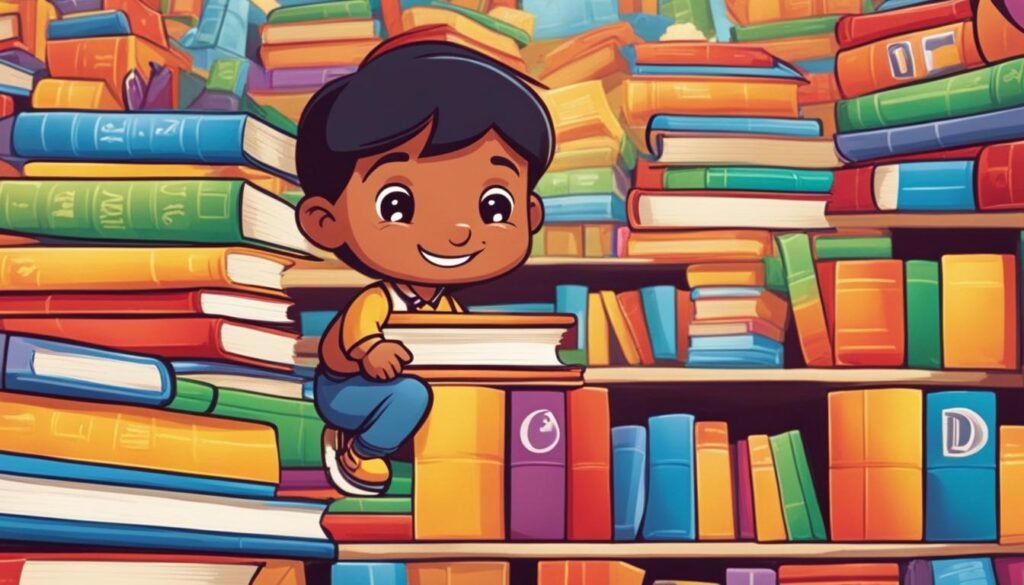
Everybody loves a good laugh, and children are no exception. Humor serves many purposes, especially when it comes to learning English. Studies reveal that humor significantly improves children’s engagement and retention. In other words, youngsters are likely to learn more when they’re having fun—all thanks to humorous English books for kids.
Consider, for instance, the “Let’s Go Series.” This collection is globally recognized for effortlessly integrating fun and learning. Packed with humorous situations and vibrant illustrations, it keeps children hooked while they explore phonics, grammar, and build their vocabulary. The humor-filled narratives help children understand linguistic nuances better and remember English words without it feeling like a task.
Another exceptional resource is the “ESL Beginner.” This engaging storybook is crafted to cater to the unique learning needs of young, non-native English learners. The delightful and humorous narratives, complemented by a range of interactive activities, enable children to laugh and learn simultaneously, making English language acquisition an enjoyable journey rather than a daunting task.
The following table provides a quick overview of these books, highlighting the essential features that make them stand out as effective language learning tools while also keeping the process fun-filled and enjoyable.
| Book Title | Key Features | Learning Elements |
|---|---|---|
| Let’s Go Series | Humorous situations, vibrant illustrations | Phonics, grammar, vocabulary |
| ESL Beginner | Engaging storybook, interactive activities | Phonics, grammar, vocabulary |
To sum it up, combining humor with language learning is a proven strategy to enhance children’s engagement and comprehension. With humorous English books for kids, parents and educators can ensure that children embark on a joyful and enriching journey of learning English with fun.
Best English Books for Kids Selection Criteria
Selecting English books for kids involves a thoughtful process. It’s necessary to carefully assess the difficulty levels of books that are adaptable to the child’s stage of learning, from beginner to advanced. Additionally, memorable visuals and contextual language can enhance the learning experience, aiding in the retention of new information.

Assessing Difficulty Levels for Beginner Readers
Choosing the right English books for beginner readers is crucial. The selection criteria for children’s books should include the consideration of simple vocabulary and a natural progression towards more complex language structures. This ensures young readers gradually improve their reading and language skills without getting overwhelmed.
Effective book selection means balancing challenge with comprehension, promoting growth without causing frustration.
Choosing Books with Memorable Visuals and Context
Importantly, choosing books with memorable visuals and a strong context is fundamental to further enrich the learning experience. Including visual aids in learning can greatly help in retention of new information, making the reading process not only more enjoyable but deeply educational and engaging.
| Selection Criteria | Example |
|---|---|
| Simple vocabulary and sentence structures | ‘Goodnight Moon’ by Margaret Wise Brown |
| Progression towards complex language | ‘Where the Wild Things Are’ by Maurice Sendak |
| Memorable visuals | ‘The Very Hungry Caterpillar’ by Eric Carle |
| Strong context | ‘The Giving Tree’ by Shel Silverstein |
By following these selection criteria, parents and educators will be better equipped to select books that are not only readable and pleasing but also educational and engaging, contributing to a child’s holistic development.
Integrating Books with Other Learning Resources
In the journey of supplementary English learning, books should not stand alone. Instead, when combined with other integrated learning resources, they form an incredibly versatile and effective educational toolkit.
Whether your child is just starting their language journey or are improving their existing skills, a multifaceted approach can prove hugely transformative. Complementing English children’s books with resources like online platforms, audio CDs, and supplementary activity books can enhance the interactive learning process, providing a myriad of ways to solidify English comprehension.

There are numerous series, for instance, “Songs and Games Phonics” and “Fun Phonics Readers,” which deftly integrate music and gameplay with language instruction. These books not only imbue the learning process with fun but also serve as valuable ESL support materials.
Activities from such resources provide continuous challenges that engage critical thinking, encouraging the learner to apply their newfound knowledge in diverse contexts. This hands-on approach can be instrumental in reinforcing the understanding of linguistic concepts and ensure their long-term retention.
“The blend of traditional books with these supplementary resources creates an engaging and enriched language learning environment that is both comprehensive and enjoyable.”
No matter where your child is on their English language learning path, incorporating a wide variety of resources can spark curiosity, engage multiple senses, and foster a deep, lasting understanding and love of the English language.
Conclusion
English books for kids offer a magical blend of education and fun, illuminating young minds while fostering a love for reading. Each story, carefully curated in this article, is specially designed to cater to both the imaginative and analytical facets of a child’s mind. The charm of these stories lies not only in their engaging narratives and vivid illustrations but also in their ability to establish a strong foundation for language learning in a delightful and entertaining way.
These books represent more than just tales; they are keys to unlocking the world of literacy for young learners. They nurture early literacy skills and promote lifelong learning by being perfectly tailored to the capabilities and interests of children at different stages of learning. From timeless classics to exciting adventures, these books are the stepping stones to the endless exploration of English language and literature.
Ultimately, the enduring power of English books for kids lies in their intrinsic ability to ignite curiosity, instill a deep-rooted appreciation for language, and inspire a profound love for reading. As indispensable tools for language learning, these books play an integral role in shaping our children’s linguistic proficiency and creativity, guiding them towards a brighter, literature-rich future.
FAQ
What are some of the best English books for kids?
“The Giving Tree” by Shel Silverstein, “Goodnight Moon” by Margaret Wise Brown, the “Curious George” series by H.A. Rey and Margret Rey, “Where the Wild Things Are” by Maurice Sendak, and Dr. Seuss’s “Green Eggs and Ham” and “The Cat in the Hat” are among the best book recommendations for children learning English or young readers in general.
How do English picture books foster creativity in children?
English picture books, like “The Very Hungry Caterpillar” by Eric Carle, combine vivid illustrations with compelling narratives. The images allow children to visualize and engage with the story, bolstering their creativity and comprehension skills. The illustrations also aid in associating new vocabulary and language concepts.
How do English alphabet books assist in children’s English language acquisition?
English alphabet books are critical in introducing the English language to children. They lay the foundation for reading skills and promote letter recognition in engaging and memorable contexts. A good example is “Learning English with Laughter”, which teaches the alphabet with humor and interactive activities.
Which books combine education with entertainment for kids?
“The Very Hungry Caterpillar” is an entertaining story that teaches about time, healthy eating, and the natural process of transformation. Likewise, “If You Give a Moose a Muffin” by Laura Numeroff blends humor with learning about actions and consequences. These books offer enhanced learning experiences beyond mere vocabulary acquisition, contributing to children’s overall development.
How can humor enhance the English learning experience for kids?
Books like the “Let’s Go Series” or “ESL Beginner” incorporate humor with teaching elements—phonics, grammar, and vocabulary. This approach engages children, improving their retention of language concepts, and makes learning English a more enjoyable journey.
What criteria should be considered when selecting English books for kids?
Choosing suitable books for children involves assessing the book’s difficulty level in relation to the child’s current reading stage. Consider simple vocabulary for beginners and gradually progress towards more complex language structures. Additionally, selecting books with memorable visuals and contextual language can enhance the learning experience and help in the retention of new information.
Can books be integrated with other learning resources?
Yes, books can be complemented with additional learning resources for a comprehensive educational experience. Online platforms, audio CDs, and supplementary activity books can augment the interactive learning process, offering varied approaches to solidify English comprehension. Series like “Songs and Games Phonics” and “Fun Phonics Readers” merge music and games with phonics instruction, providing continuous challenges to stimulate critical thinking and reinforce language concepts.
